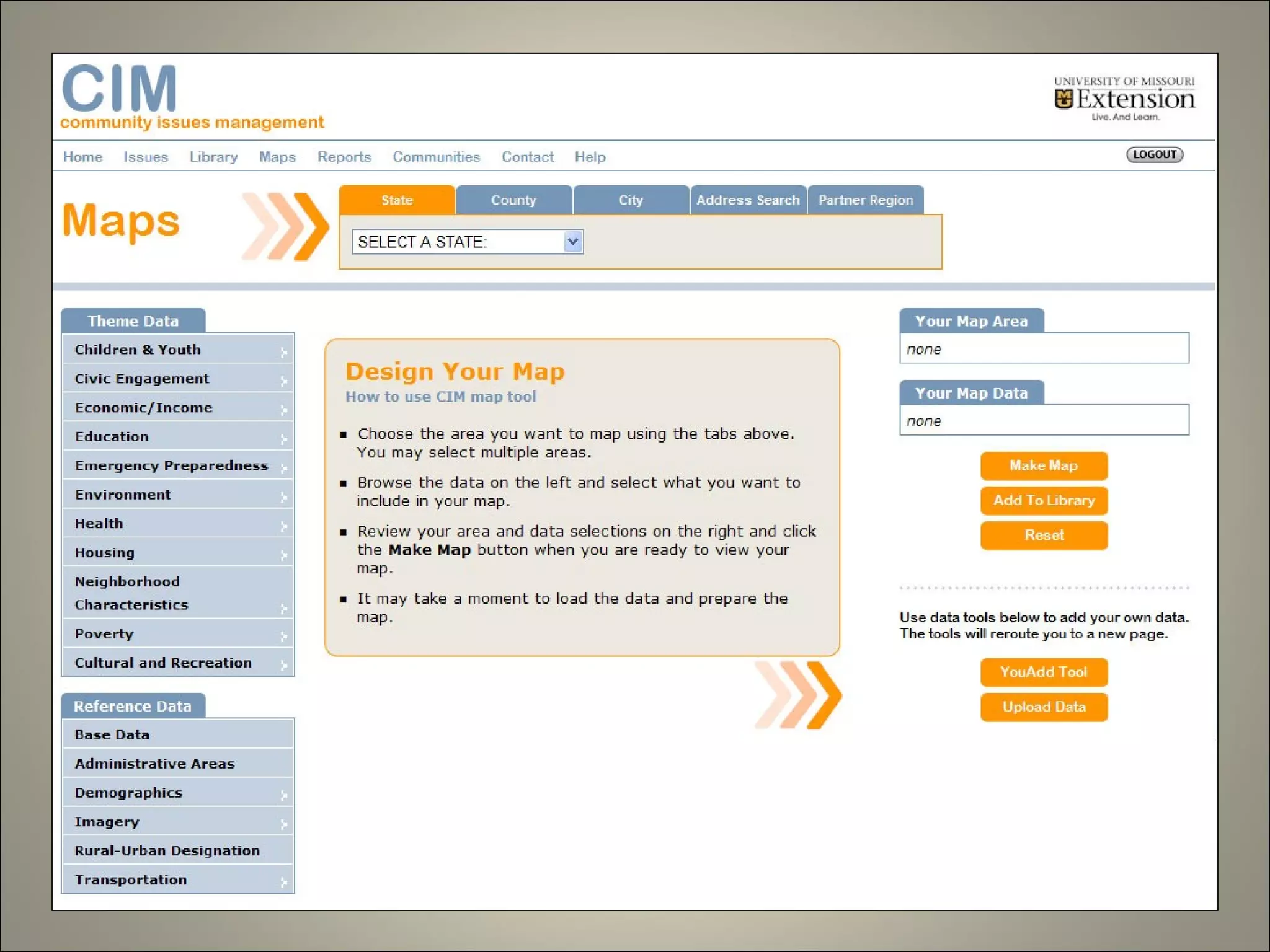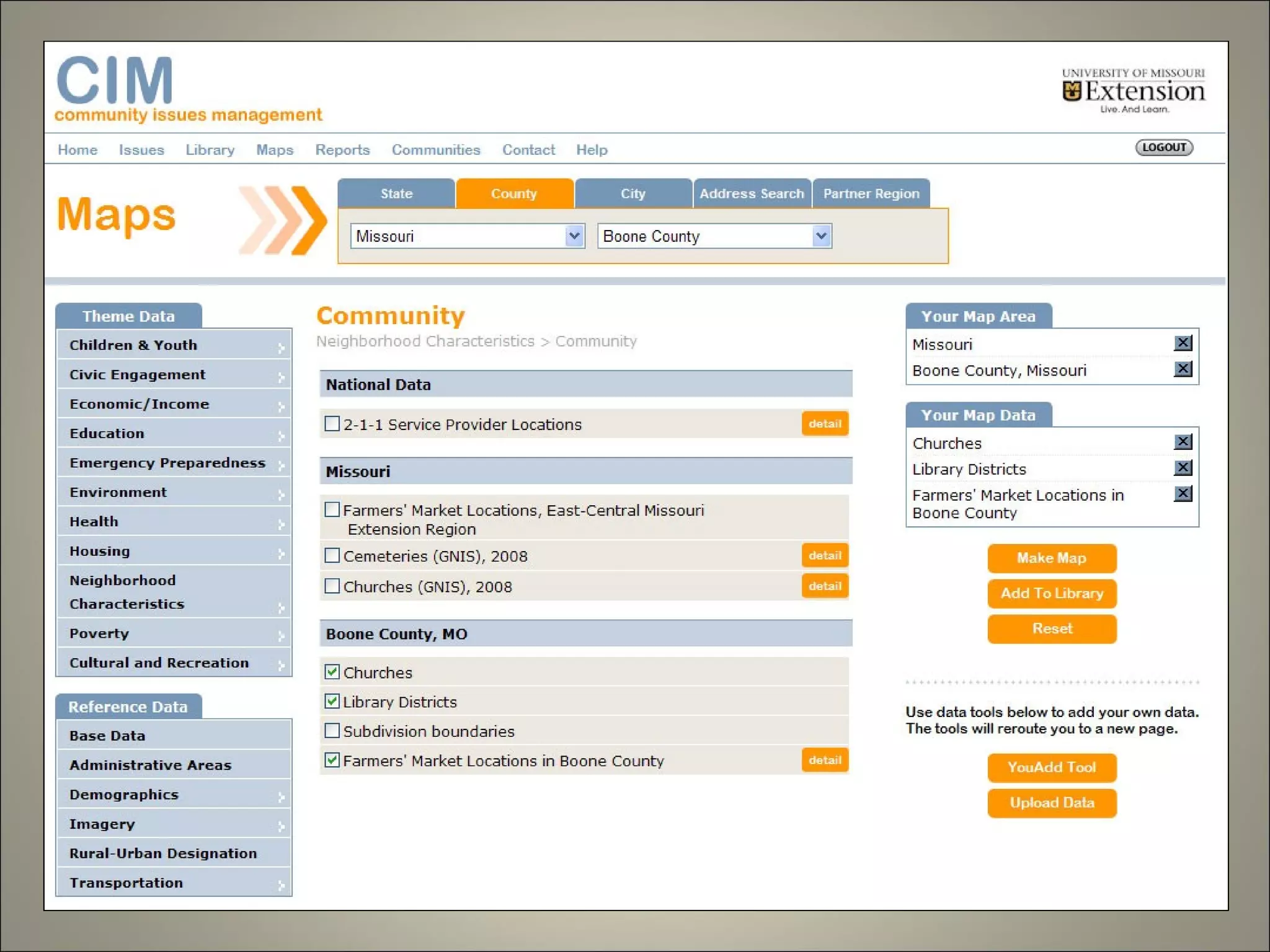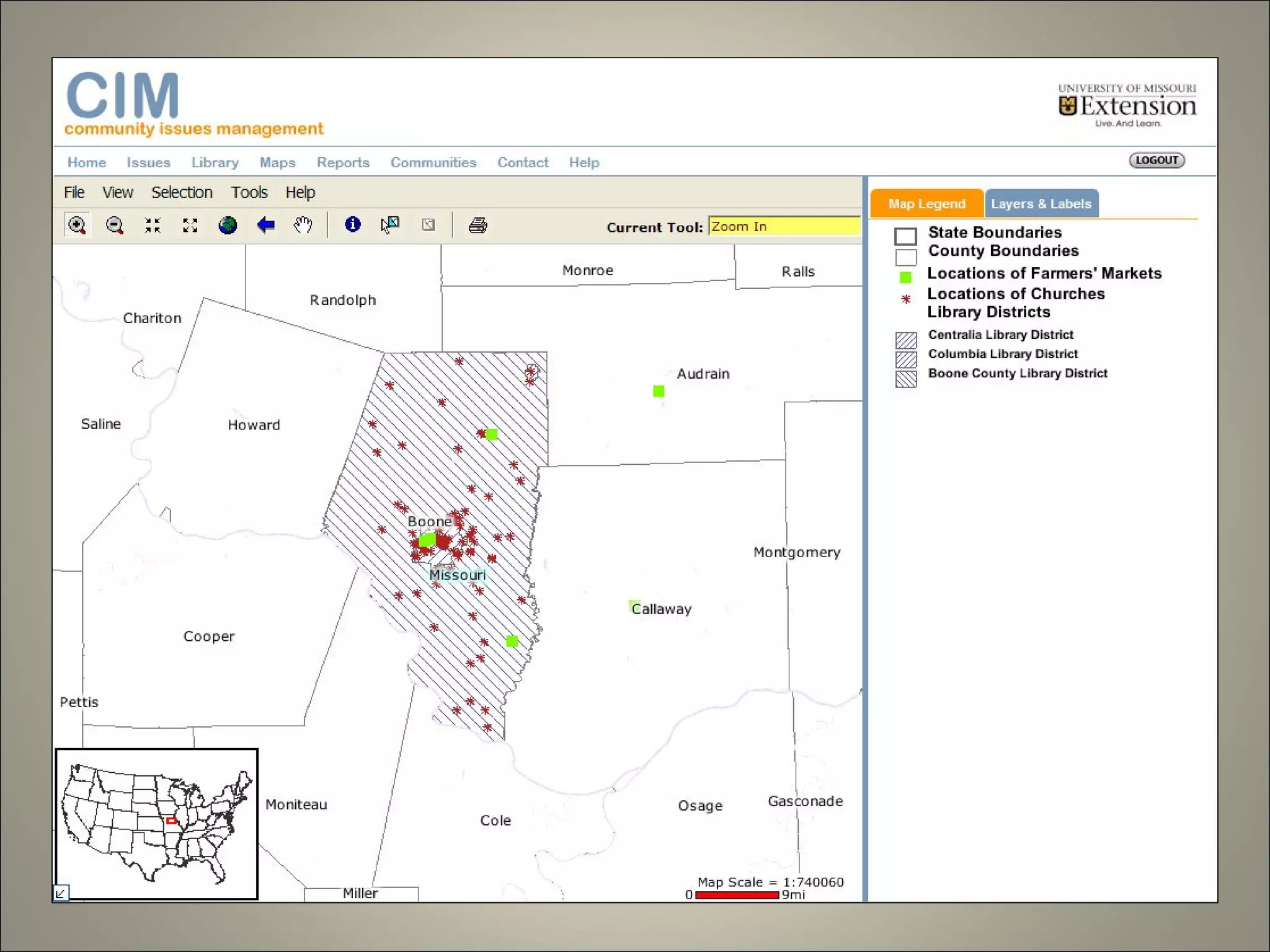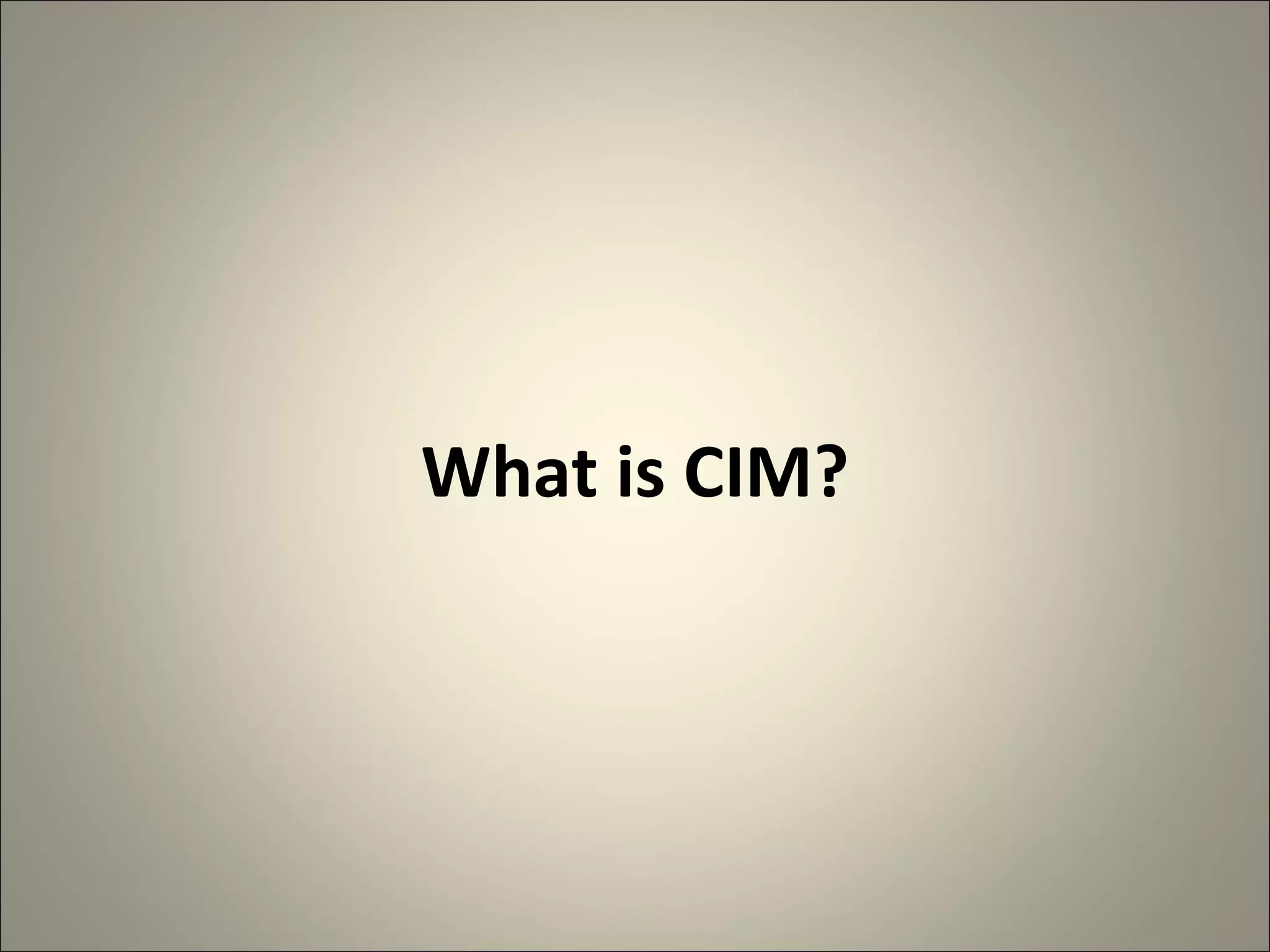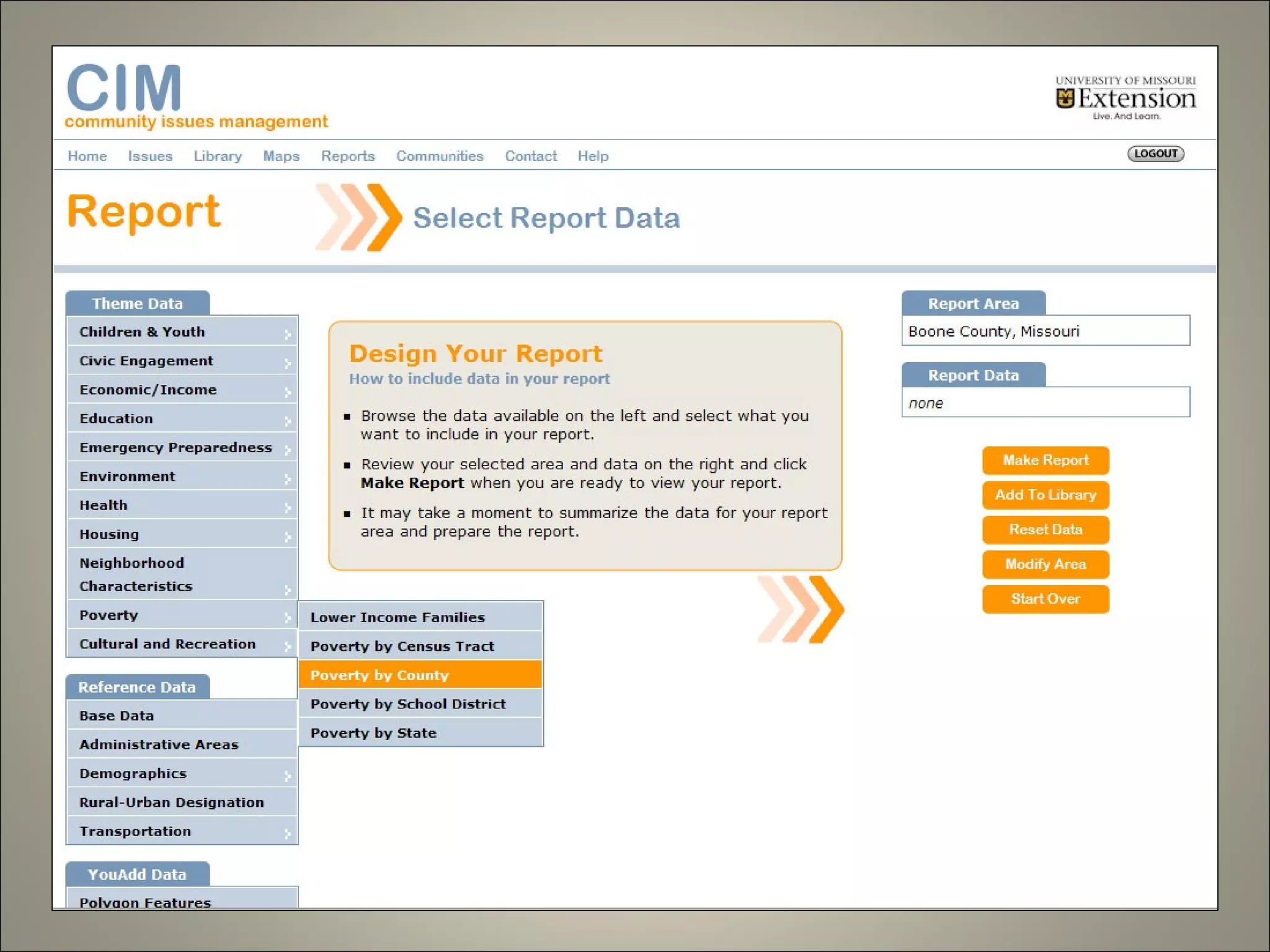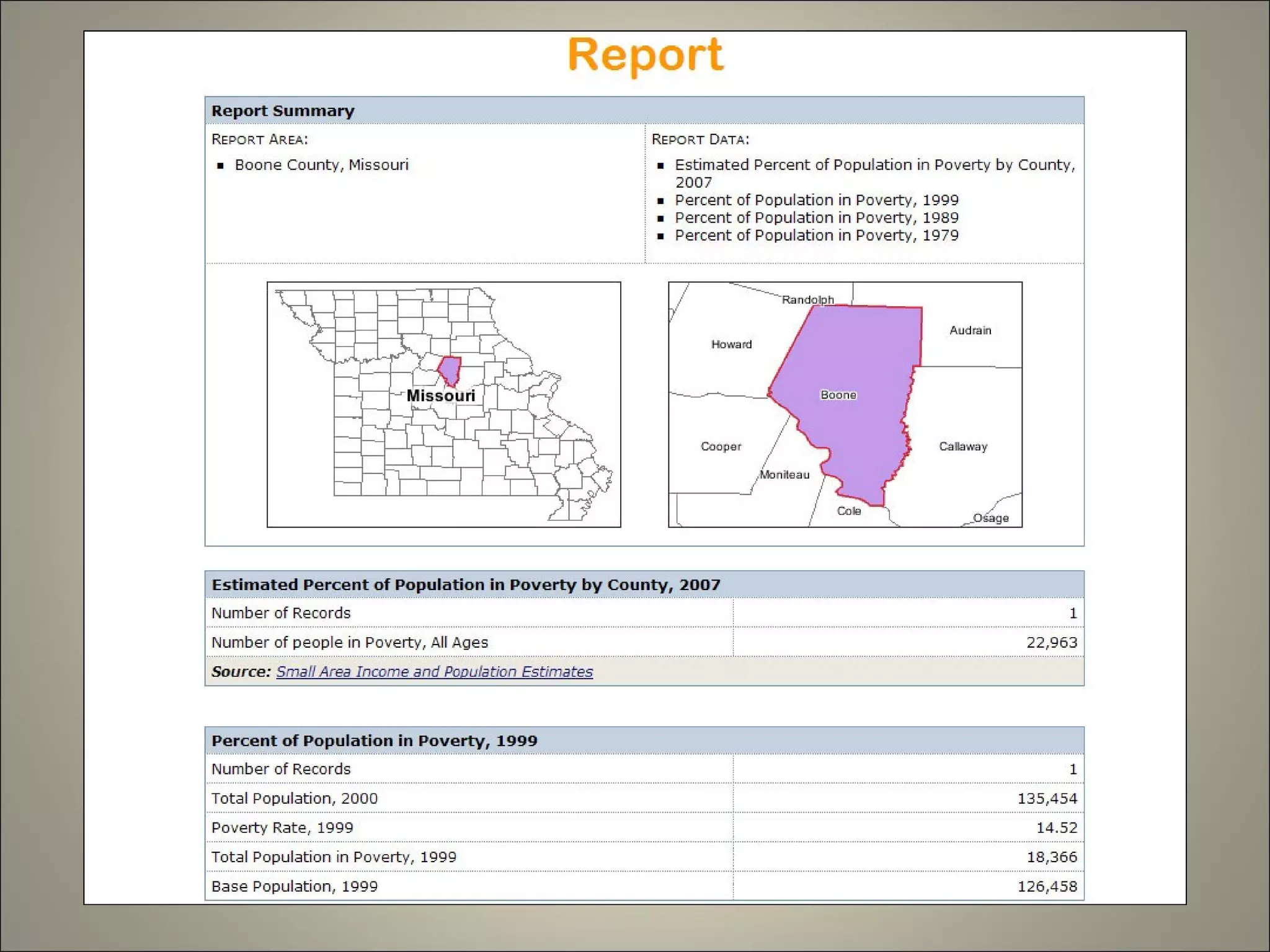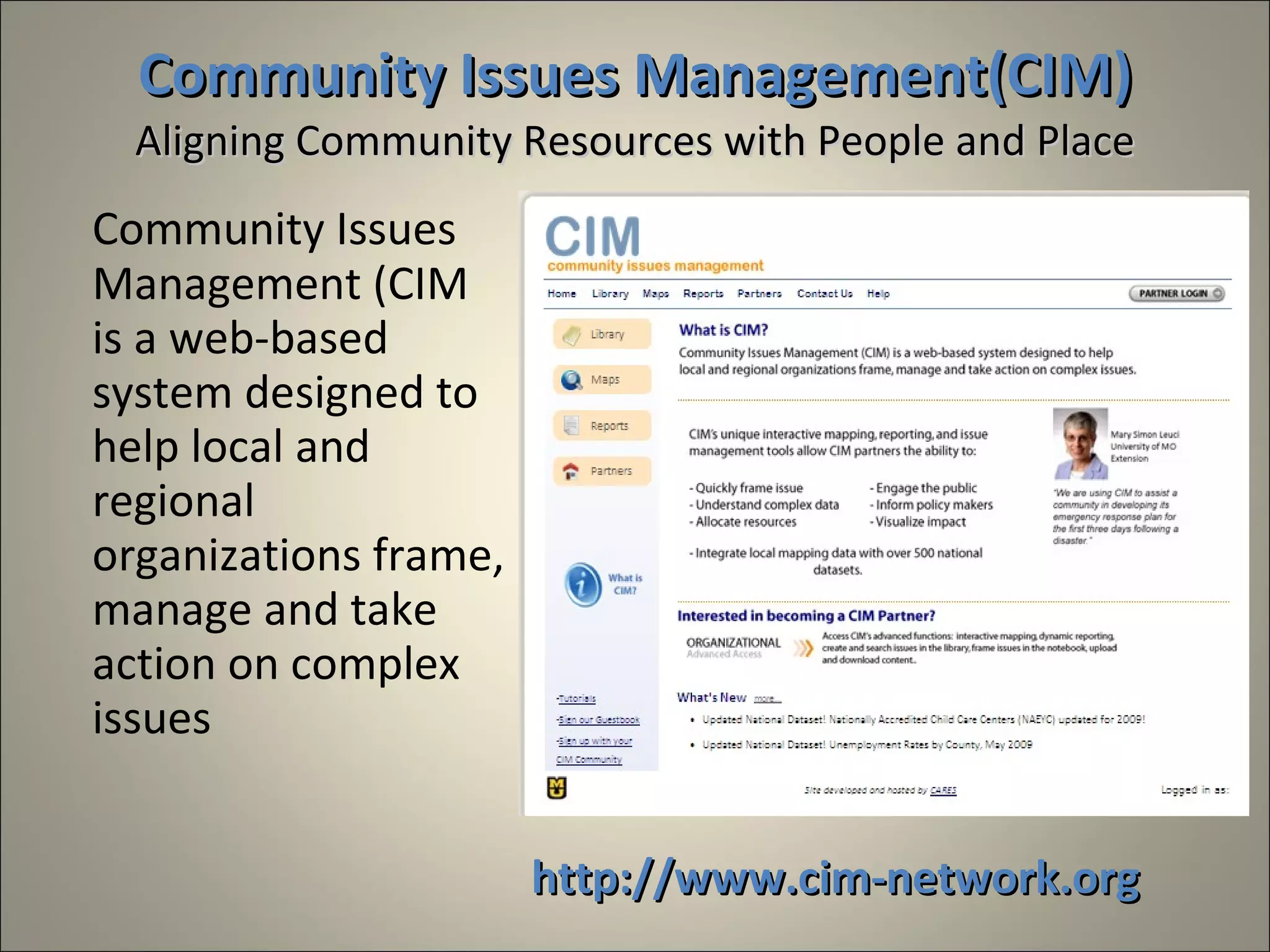Community Issues Management (CIM) is a web-based system that helps organizations manage complex community issues through strategic planning, public engagement, and resource allocation. The CIM focuses on integrating community data to improve decision-making and facilitate collaboration among various partners, including nonprofits and health networks. Case studies highlight its application in areas such as resource distribution for food programs and community health improvement initiatives.
















